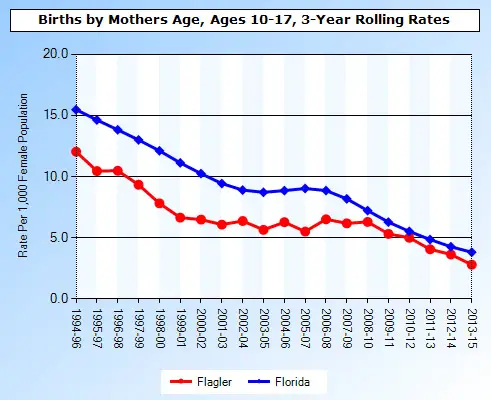
Teen pregnancy is way down. And a study suggests that the reason is increased, and increasingly effective, use of contraceptives.
From 2007 to 2013, births to teens age 15 to 19 dropped by 36 percent; pregnancies fell by 25 percent from 2007 to 2011, according to federal data.
But that wasn’t because teens were shunning sex. The amount of sex being had by teenagers during that time period was largely unchanged, says the study, which was published online in the Journal of Adolescent Health. And it wasn’t because they were having more abortions. Abortion has been declining among all age groups, and particularly among teenagers.
Rather, the researchers from the Guttmacher Institute and Columbia University found that “improvement in contraceptive use” accounted for the entire reduced risk of pregnancy over the five-year period.
“By definition, if teens are having the same amount of sex but getting pregnant less often, it’s because of contraception,” said Laura Lindberg, the study’s lead author and a Guttmacher researcher.
The drop has been just as dramatic in Flagler County: In the early 1990s–and using the same age bracket as does federal data–there were 50 births to girls and women up to age 19, per 1,000 women (compared to 60 per 1,000 in Florida). In the latest three-year average, covering 2013-15, there were 20 such births in Flagler, a few less than the Florida rate. Flagler was among the counties with the lowest teen births in the state. The drop was especially steep for younger girls: in births to girls 17 or younger in Flagler, the drop went from 12 such births per 1,000 in the early 90s to 3.8 in 2013-15, and four in Florida.

Also, the use of any contraceptive at all makes a big difference, said Lindberg. “If a teen uses no method they have an 85 percent chance of getting pregnant [within a year]. Using anything is way more effective than that 85 percent risk.”
The downturn in teen births actually dates back to the early 1990s, the authors say, with the rate dropping by 57 percent between 1991 and 2013. The increase in contraceptive use dates to the mid-1990s, with the use of any contraceptive at the most recent sexual encounter rising from 66 to 86 percent from 1995 to 2012.
Valerie Huber, who advocates for programs that urge teens to wait to have sex rather than provide information about contraception, says the study is biased toward birth control.
“As public health experts and policymakers, we must normalize sexual delay more than we normalize teen sex, even with contraception,” said a statement from Huber, president and CEO of Ascend, a group that promotes abstinence education. “We believe youth deserve the best opportunity for a healthy future.”
More recent policy changes could help drop the teen pregnancy rate even more. One is the Affordable Care Act requirement that boosted insurance coverage for contraception, starting in 2012. The other is the 2014 recommendation from the American Academy of Pediatrics that sexually active teenagers be offered “long-acting reversible contraception” methods such as implants and intrauterine devices, which are highly effective and do not require any additional action, such as remembering to take a daily pill.
But Lindberg noted that just as for older women, teens should be offered a full choice of contraceptives. “In the end, the best method for anyone is one that they are willing and able to use.”
–Julie Rovner, Kaiser Health News, and FlaglerLive





























r&r says
Another thing that will help is to reduce or eliminate the entitlements for having the kids in the first place.
Joe says
Money tip of the day, buy stock in trojan!!!
Ken Dodge says
“. . . and statistics show increasing opportunities for statisticians.” The amount of abortions can be shown by statistical studies, as can the amount of childbirths. But to assert “. . . they found that teens were using contraceptives more often,” without statistics is a little fuzzy. What would be interesting would be to measure the increase, or decrease in the occurrence of STDs and other venereal diseases in the group. That would be quite telling.
Knightwatch says
Can’t be good. Just ask any conservative Christian. Sex education and contraception only promote ugly, sinful teen sex. Ill-informed teens, unwanted children and STDs are far more acceptable than the evils of medical science and social progress.
The Geode says
Depends on WHICH neighborhoods these “state” were taken. I also agree with r&r with his assessment of “entitlement programs” are the LARGEST enabler of unwanted/unneeded child births.